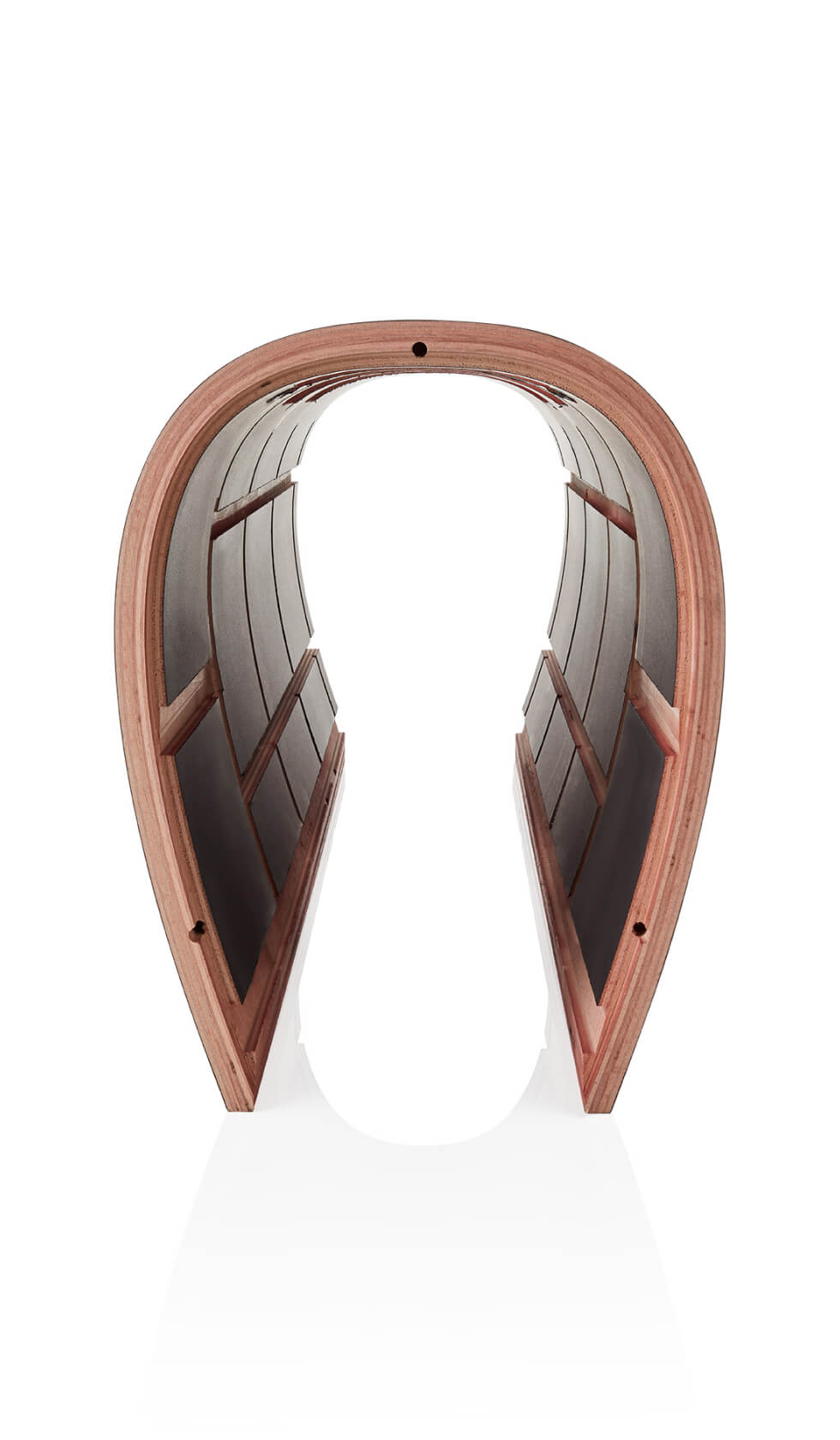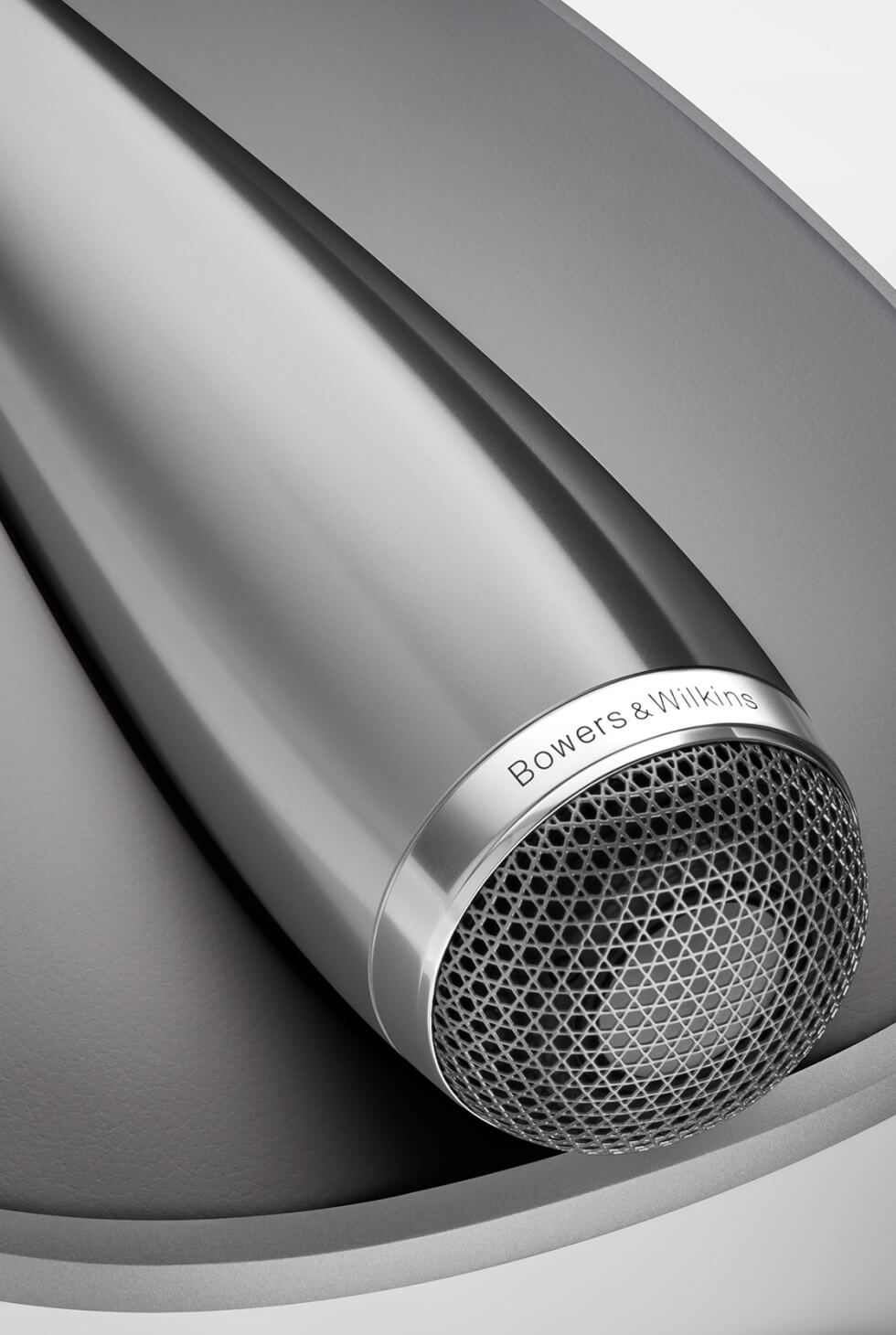B&W 801-D4 Floorstanding Tower Speaker (Pair) - B&W 800 Series - High Level HiFi
|
|
Information
The loudspeaker that sets the standard other high-end designs will be judged by for years to come. Endowed with every new technology the 800 Series Diamond™ has to offer, the reference-quality 801 D4 is an instant icon.
The state of our art
801 D4 is our flagship and the most powerful model in the new 800 Series Diamond range. Its no-compromise design includes all our most advanced technologies in their purest, most optimised form alongside crossover components of the highest quality. You want our reference loudspeaker? This is it…

The ultimate Matrix™
Matrix bracing uses interlocking panels to reinforce loudspeaker cabinet walls in all directions internally, reducing resonance and creating a more believable soundstage. The Matrix assembly in 801 D4 is our best yet, upgraded with extensive aluminium bracing to reinforce key stress points.

Turbine™ Head
The all-aluminium Turbine Head houses our Continuum™ midrange cone in a stiff and critically damped enclosure to eliminate unwanted resonances. At the same time, it’s decoupled from both the bass enclosure and the tweeter body. The result? The most realistic midrange sound yet.

Biomimetic Suspension
Sometimes, making a big difference takes unconventional thinking. Our new Biomimetic Suspension revolutionises midrange performance by greatly reducing the unwanted air pressure and coloration that a traditional fabric spider can generate. The result? Midrange transparency you wouldn’t believe.
Features
If you were to attempt to summarise what we’re trying to do with the 800 Series Diamond, it’s this: as far as is possible, we don’t want our flagship loudspeakers to sound like loudspeakers at all. But of course, that’s easier said than done. In this, the first of a series of technical blogs, we’ll look at the role our loudspeaker cabinets and structures play in delivering improved performance.
It’s something we drill into every new member of staff whenever they join us. People don’t buy loudspeakers because they want to listen to loudspeakers: they buy loudspeakers because they want to listen to music.
The trouble is, whenever they’re replaying your music, loudspeakers are also, to some extent, making unwanted sounds too, in the form of unwanted resonances. These are in turn, caused in large part by their acoustic and structural limitations. Both the shape of the speaker itself and the materials it is made from exert a huge influence on how effective it is – and the bigger the speaker is, the more that issue is exacerbated simply because there’s more speaker cabinet in the room and with it, more potential sources of noise.

Cabinets count
Solving those limitations becomes easier in our 800 Series Diamond, even though most models are larger than our more affordable loudspeakers. That’s simply because the selling price of the product supports the use of more exotic forms and materials. So for example, we can use substantial aluminium structures, which are inherently stiffer and more resistant to vibration, rather than say, MDF, as we use in our entry-level 600 Series Anniversary Edition. We can also conjure up industrial design forms – such as the Turbine Head or the curved Reverse Wrap cabinet – that are more expensive to make and which require bespoke tooling to manufacture, and again, we are able to make those choices because of the selling price of our loudspeakers.
We began our quest for improved performance – much like we did back in 2012 – by looking in detail at the mechanical and acoustic form of the existing 800 Series Diamond. Thanks to ever-increasing computer processing speeds and a generally better understanding of how to use Finite Element Analysis, we had made huge strides on cabinet performance when we switched from the older ‘D2’ generation to 2015’s ‘D3’ models. The Reverse Wrap cabinet form was massively stiffer and quieter than the old model, as was the new Turbine Head form for our midrange cone.


All the same, in 2015 we weren’t able to switch every model in the range over to the Reverse Wrap form: our smaller models – the 805 D3 and 804 D3, specifically – remained on the older cabinet form, chiefly because of a combination of time-frame limitations and cost. In 2021, we’ve been able to correct that: both 805 and 804 D4, plus our smaller HTM82 D4 centre-channel speaker, now use the same Reverse Wrap manufacturing process as all of the larger models. The result is giant leaps forward in performance for all three of those models.
The curvature of the Reverse Wrap is, in itself, a key element of its success. By placing the loudspeaker’s drive units at the front of speaker at the heart of its curved wrap form, the design controls unwanted resonance much more effectively: any vibration from the drive units is directed into the stiffest single piece of the entire structure, the material section which is furthest away from the ‘ends’ of the Wrap. To further control that resonance, we now use an aluminium bracing plate bolted to the inside of the cabinet, exactly as we have previously done with our larger speakers – and again, that has huge benefits for the speaker’s ability to control unwanted resonance.
It’s not just the smaller models in the range that have enjoyed improvements to their cabinets. The larger models (803, 802 and 801 D4) all have upgraded Matrix assemblies – the internal bracing that supports their cabinets in multiple directions – with multiple additional metal sections, including both vertical and horizontal U-Shaped sections of aluminium that are now glued and bolted into position. And in the 801 D4, we have also introduced an aluminium bracing plate into the bottom of the cabinet around the Flowport, reflecting the added size of that aperture on our largest 800 Series Diamond model: this further quietens the cabinet in that crucial area.
Stiffer top
Alongside switching every model to the Reverse Wrap, we have added a new cabinet detail to every model, including the 2015-edition cabinet forms: they now include an aluminium top-plate. This either plays host to a Solid Body Tweeter-on-Top assembly (in 805 D4 and 804 D4) or an upgraded Turbine Head (803 D4, 802 D4 and 801 D4). This new metal section has a variety of benefits: it further stiffens up the top of the cabinet in a crucial area and, at the same time, it provides a superior location for the decoupling mechanism to locate into.

Tweeter and midrange
The Solid Body Tweeter-on-Top has been revised in every new 800 Series Diamond loudspeaker, including both models with and without the Turbine Head. The new design is longer – approaching 30cm (12-in) long – and its longer tube length has notable benefits for the resonant frequency (f/s) of the diamond dome tweeter, essentially meaning that the dome can now ‘breathe’ more easily than before. Alongside a revised two-point decoupling mechanism that ensures better-than-ever isolation of the sensitive assembly from its surrounding enclosure, the result is an even-more-believable sense of sounds floating in free space rather than being restricted to the confines of a loudspeaker cabinet.
We have aimed for the same benefits for our revised and upgraded Turbine Head midrange enclosures. As already mentioned, they enjoy that superior isolation from the top of the bass cabinet because of the aluminium top-plate that all stereo cabinets now use. In addition, we’ve revised the tuned-mass dampers that control resonance in each housing – with two dampers in 803 D4 and three in each of 802 and 801 D4 – and added in resonance-damping material to the metal fins at the rear of the housing. We’ve also completely redesigned the decoupling for the midrange assembly itself – but we’ll go into more detail on that in a later blog.


Solid foundations

Finally (at least in regard of cabinets) we’ve revised and improved the way our speakers connect with the floor in your room. The 805 D4 now has an upgraded stand with additional steel inserts in its base and massively thicker M12 floor spikes (replacing the older M6 designs). The 804 D4, meanwhile, uses a downward-firing port exiting on to an all-new aluminium plinth with constrained layer damping – exactly as per the 800 D3 in the older range – with those same M12 spikes. And we’ve carried that constrained layer damping over to the 803 and 802 D4 as well, with both models adopting an all-aluminium plinth (replacing the zinc aluminium alloy used previously) controlled by a damping layer held in place by a thin steel sheet.
All of this work has gone into just acoustic and mechanical properties of each loudspeaker – we haven’t even scratched the surface of transducer design or crossover componentry. But even with ‘just’ this area covered, it should be clear that the results are radically transformed loudspeakers that sound even more believable – and even less like loudspeakers – than ever.
Specifications
Size & weight
| Dimensions | Height: 1221mm (48.1 in) Width: 451mm (17.8 in) Depth: 600mm (23.62 in) |
| Net weight | 100.60kg (221.8 lb) |
Technical details
| Technical features | Diamond tweeter Solid body Tweeter-on-Top Continuum™ cone FST Anti-Resonance plug Biomimetic Suspension Turbine™ Head Matrix™ Aerofoil™ cone bass units Flowport |
| Description | 3-way vented-box system |
| Drive units | 1x ø25mm (1in) Diamond dome high-frequency 1x ø150mm (6in) Continuum cone FST midrange 2x ø250mm (10in) Aerofoil cone bass units |
| Frequency range | 13Hz to 35kHz |
| Frequency response | 15Hz to 28kHz (+/-3dB from reference axis) |
| Sensitivity | 90dB (on axis at 2.83Vrms at 1m) |
| Harmonic distortion | 2nd and 3rd harmonics (90dB,1m on axis) <1% 30Hz – 20kHz <0.3% 100Hz – 20kHz |
| Nominal impedance | 8Ω (minimum 3.0Ω) |
| Recommended amplifier power | 50W – 1000W into 8Ω on unclipped programme |
| Max recommended cable impedance | 0.1Ω |
Finishes
| Cabinet finishes | Gloss Black White Satin Rosenut Satin Walnut |
| Grille finishes | Black Grey Black Grey |
Reviews
This is the best version of the 801s in the entire history of the company and, perhaps, one of the best, if not the best high-end loudspeakers on the market today.
Bowers & Wilkins new 801 D4 Loudspeaker is a work of art that also happens to offer world-class sound.
The sound of the 801 D4 is one of absolute conviction and positivity. Every last shred of information contained in a recording is handed over, in full, with the sort of immediacy that can be literally hair-raising.
Associated Items
View your shopping basket or Browse other items in B&W 800 Series - High Level HiFi.















